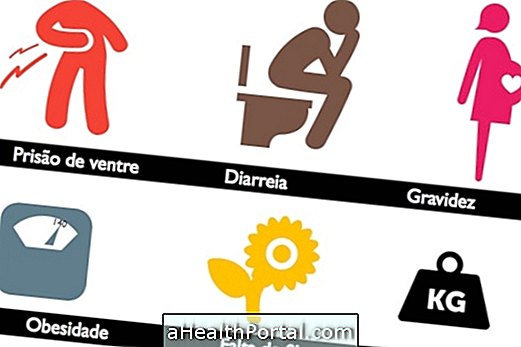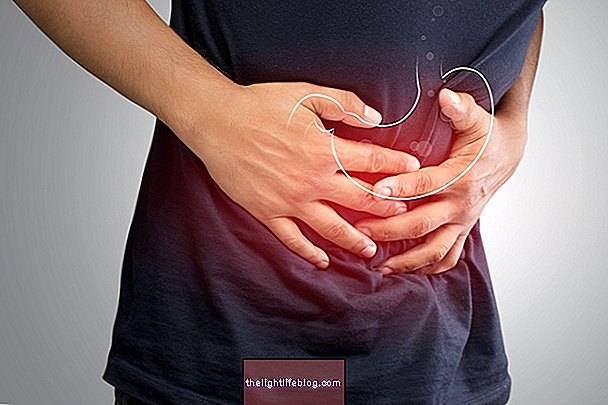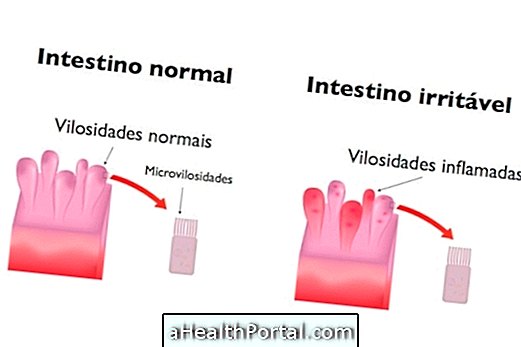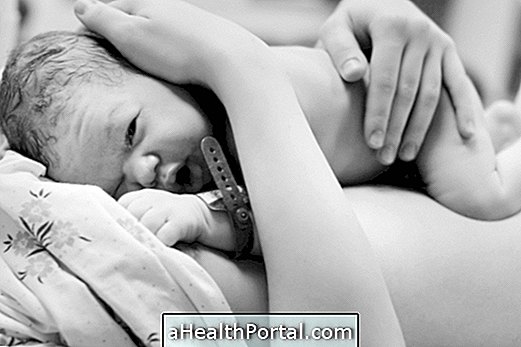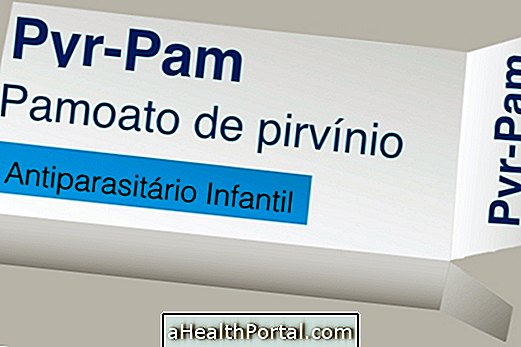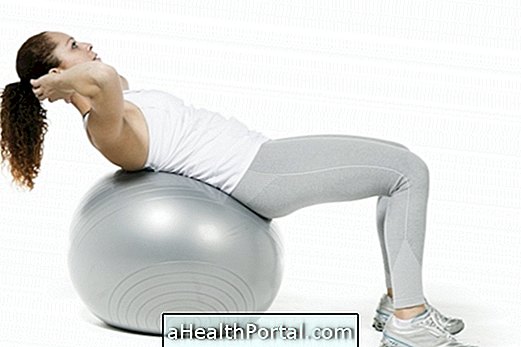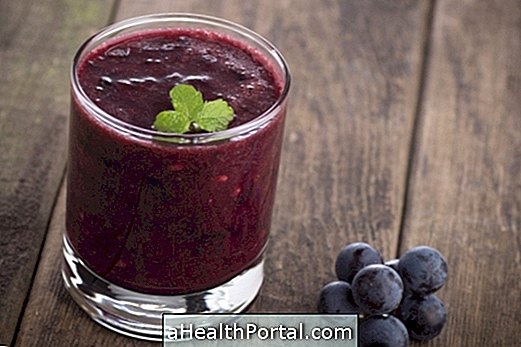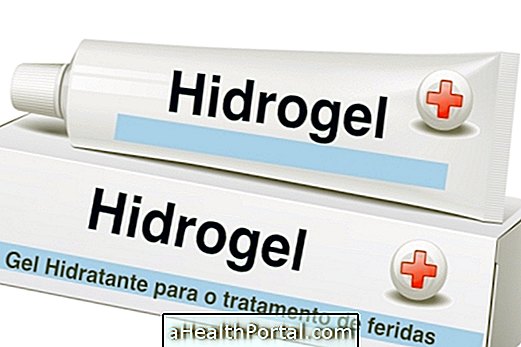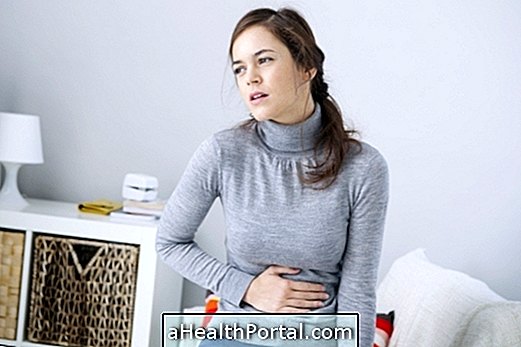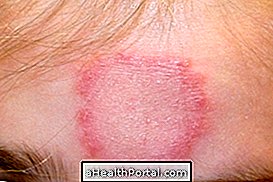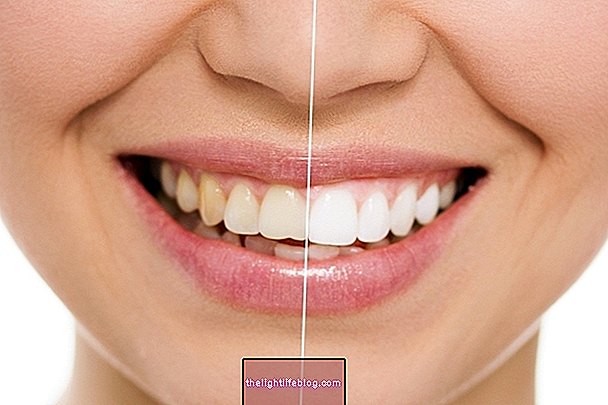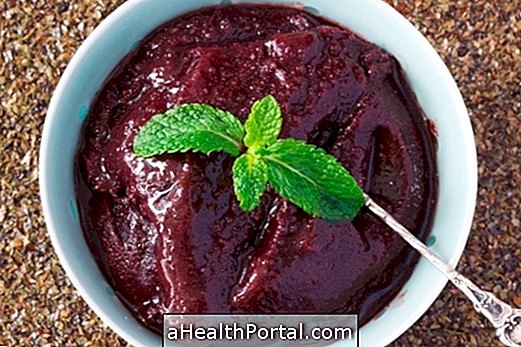The treatment for hemorrhoids can be done with progestogen-prescribed analgesic and anti-inflammatory drugs to relieve pain and discomfort, such as Paracetamol or Ibuprofen, ointments such as Proctyl or Ultraproct, or surgery in the most severe cases where hemorrhoids become " prey "in the anus, for example.
Some home measures such as bathing with warm water and some care, such as avoiding toilet paper not to injure the anal area, for example, also help treat hemorrhoids, especially in case of hemorrhoids in pregnancy. Learn more about treating hemorrhoids in pregnancy.
Here are some important care to take to treat hemorrhoids:
1. Make a fiber-rich diet

To help treat and prevent the worsening of hemorrhoids one should eat high-fiber foods such as brown rice, bread with cereals, flaxseed, and wheat germ every day to make stool softer and not cause pain when it comes to bathroom. In addition, it is important to drink about 1.5 to 2 liters of water per day.
2. Go to the bathroom as soon as you feel like it

Some important strategies that can help relieve pain is to avoid making too much force to evacuate and not pick up weights by going to the bathroom as soon as you feel like it.
In addition, you should avoid using toilet paper, just wash the area with soap and water, not to feel so much pain and not to hurt the fragile skin.
3. Practice physical exercise

Practicing exercise regularly, such as walking or swimming, increase the mobility of the gut and makes the stool more shaped.
All these care will help relieve the pain and discomfort of hemorrhoids in order to prevent them from becoming more inflamed and make the stool more shaped, helping them to come out more easily, reducing the pain. You can also use a circle-shaped cushion open in the center when you have to sit at work for several hours.
4. Apply ointments to hemorrhoids

Hemorrhoid ointments such as Hemovirtus, Proctyl, Ultraproct or Wormweed are widely used in the treatment of hemorrhoids because they have vasoconstricting, analgesic and anti-inflammatory properties. The ointments should be indicated by the doctor and applied directly on the hemorrhoid, with a gentle massage, 2 to 3 times a day, for the duration of the treatment. Know all the hemorrhoid ointments.
In some cases, the doctor may also recommend tablets to relieve pain, such as analgesics and anti-inflammatories, for example.
In addition, in some cases the surgery is indicated mainly in the most severe cases in which the hemorrhoid is "trapped" in the anus. There are several surgical techniques to remove hemorrhoid, so it is the doctor who decides according to the type and location of the hemorrhoid that technique to use. Learn how hemorrhoid surgery is done.
5. Seat Bathing
Sitz baths are one of the home treatments for hemorrhoids can be done with warm water about 3 to 4 times a day as the warm water helps to relieve the pain and discomfort. To make a seat bath, simply fill a large basin with warm water and sit inside it, without underwear, for about 20 minutes or until the water cools.
Sitz baths may be more effective if anti-inflammatory and vasopressor substances are added to the water, such as witch hazel, cypress or onion, for example. Here's how to prepare some options in the following video:

Signs of improvement
Signs of improvement in hemorrhoids include relief of pain and discomfort, especially when evacuating and sitting, disappearance of blood in the bowel movements or after clearing the anal area and the disappearance of one or more paps in the anal region in the case of hemorrhoids outside.
Signs of worsening
Signs of worsening hemorrhoids include increased pain and discomfort, especially when sitting or taking a bowel movement, an increase in the volume of papules in the anus, and increased blood in stool or toilet tissue after bowel movements.


